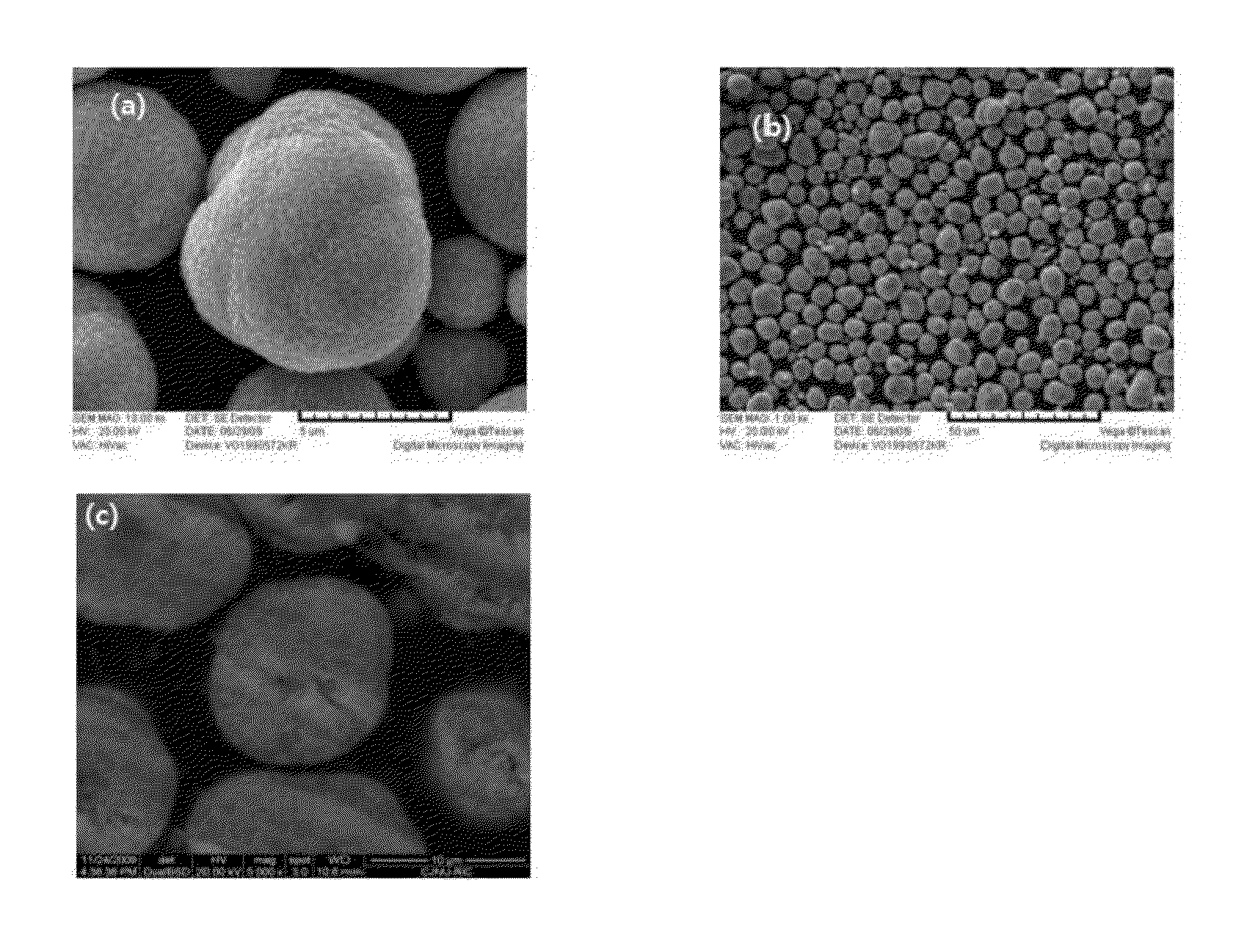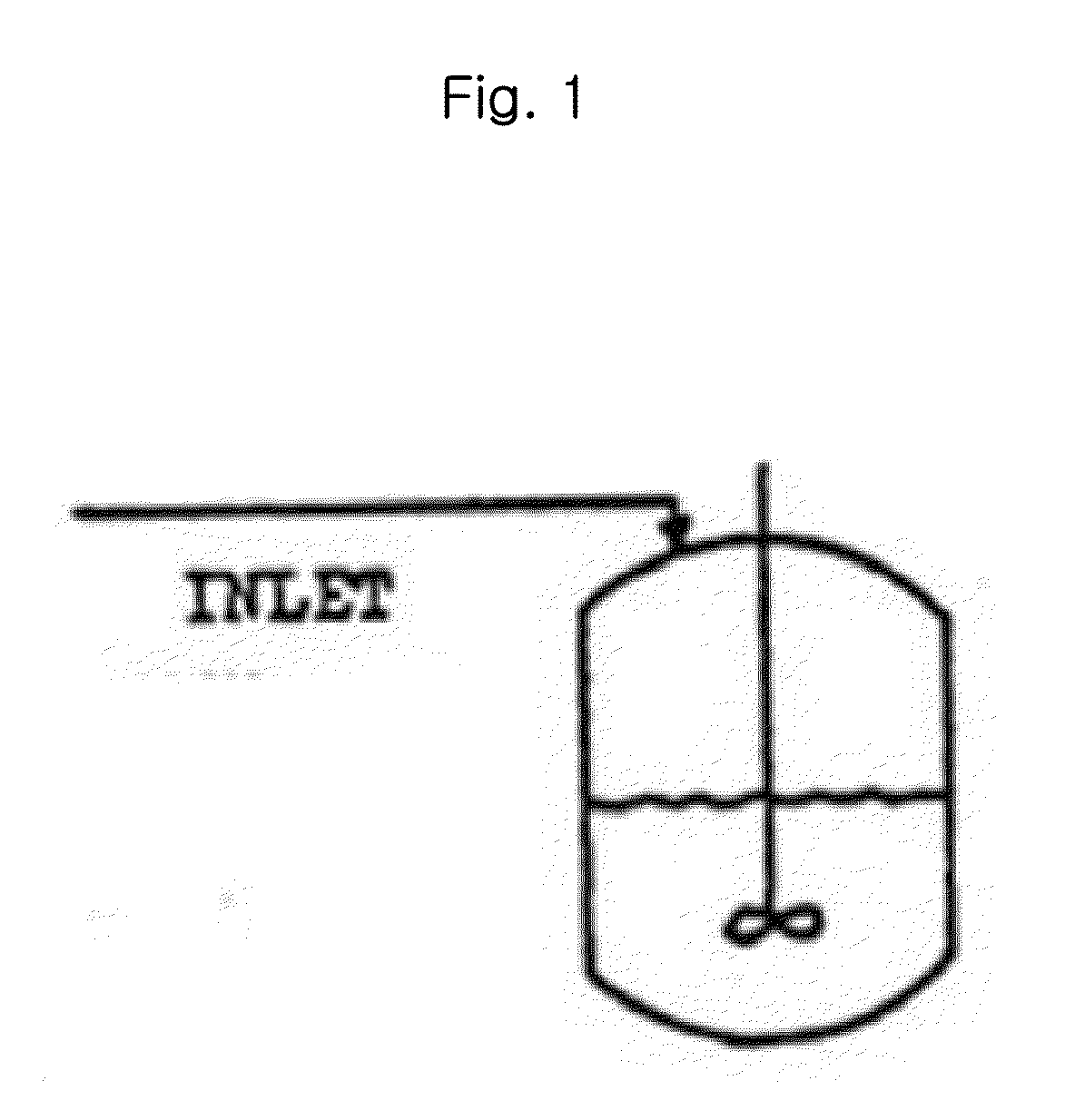Method for preparing positive electrode active material precursor and positive electrode material for lithium secondary battery having concentration-gradient layer using batch reactor, and positive electrode active material precursor and positive electrode material for lithium secondary battery prepared by the method
a technology of active materials and lithium secondary batteries, which is applied in the direction of coatings, cell components, nickel compounds, etc., can solve the problems of not solving the stability problem, high cost and safety, and poor thermal stability, so as to prolong the life, improve the stability, and increase the capacity and tapped density
- Summary
- Abstract
- Description
- Claims
- Application Information
AI Technical Summary
Benefits of technology
Problems solved by technology
Method used
Image
Examples
example
[0080]Distilled water 20 L and ammonia as a chelating agent 840 g were fed into a batch reactor (capacity: 70 L, ouput of a rotating motor: 80 W or more), and the mixture was stirred using a motor at 400 rpm as maintaining the temperature in the reactor at 50° C.
[0081]Then, as the second step, a 2.5M first precursor aqueous solution (nickel sulfate: cobalt sulfate:manganese sulfate (molar ratio)=8:1:1) and an 28% ammonia aqueous solution were continuously supplied into the reactor at the rate of 2.2 L / hour and 0.15 L / hour, respectively. Further, for adjusting pH, 25% sodium hydroxide aqueous solution was supplied thereinto to maintain pH at 11. Impeller speed was controlled at 400 rpm. The prepared first precursor aqueous solution, ammonia solution and sodium hydroxide solution were supplied into the reactor continuously up to 27 L.
[0082]Then, as the third step, an 2.5M aqueous solution for forming a concentration-gradient layer (nickel sulfate:cobalt sulfate:manganese sulfate (mola...
PUM
 Login to View More
Login to View More Abstract
Description
Claims
Application Information
 Login to View More
Login to View More - R&D
- Intellectual Property
- Life Sciences
- Materials
- Tech Scout
- Unparalleled Data Quality
- Higher Quality Content
- 60% Fewer Hallucinations
Browse by: Latest US Patents, China's latest patents, Technical Efficacy Thesaurus, Application Domain, Technology Topic, Popular Technical Reports.
© 2025 PatSnap. All rights reserved.Legal|Privacy policy|Modern Slavery Act Transparency Statement|Sitemap|About US| Contact US: help@patsnap.com



